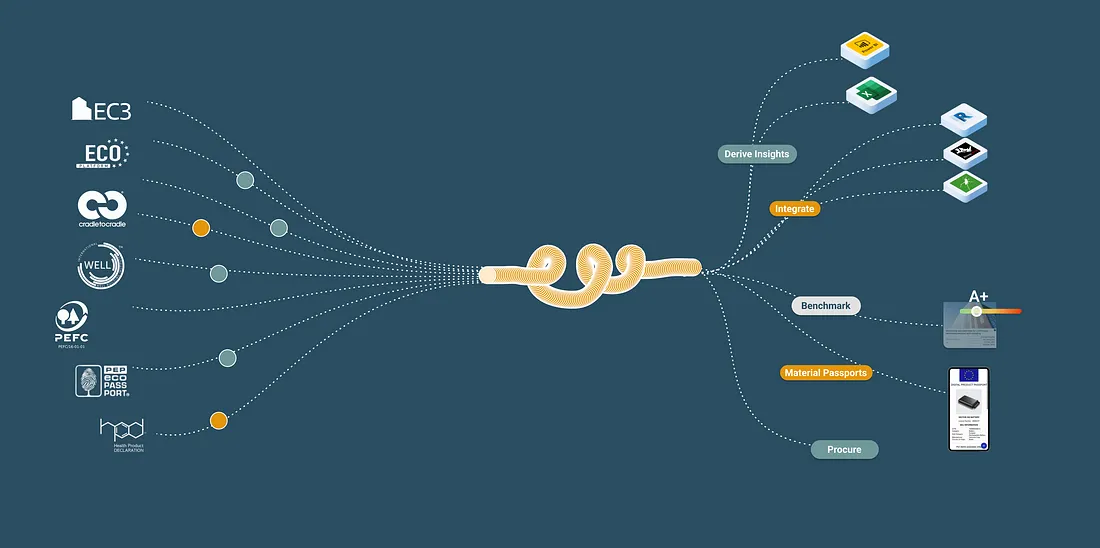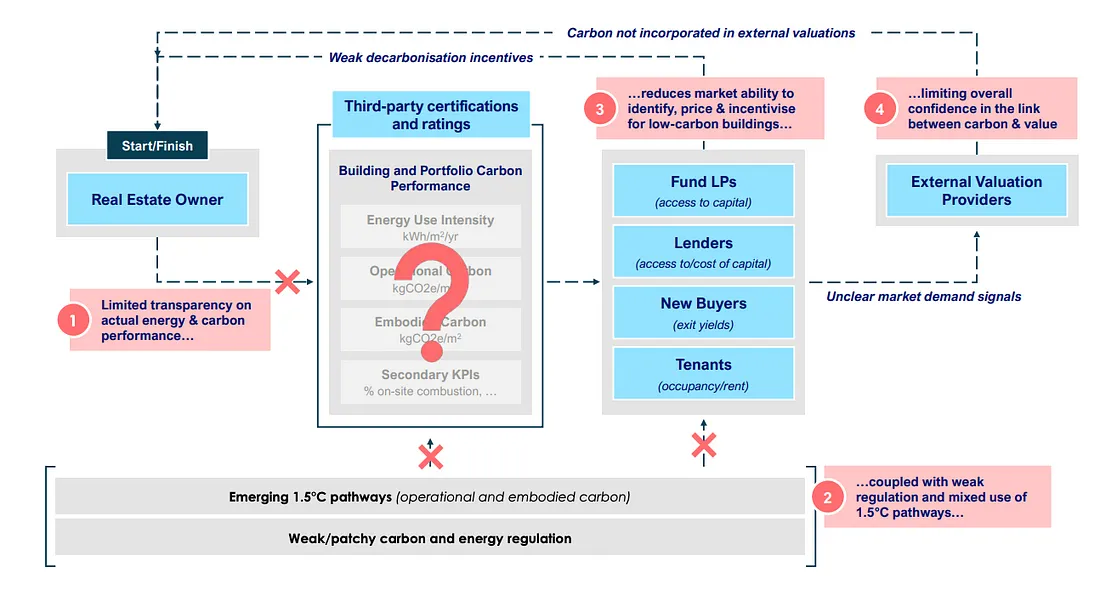Opinion: How LLMs Will Transform The Way Designers Interact With Data
Artificial intelligence, particularly with Large Language Models (LLMs) and generative AI, is changing the way we handle data in the built environment. It’s making sustainability data easy to understand and use, helping industry stakeholders make environmentally friendly decisions.
 This piece looks at how AI and LLMs are transforming product data management, improving analytics, and offering valuable insights for sustainable practices.
This piece looks at how AI and LLMs are transforming product data management, improving analytics, and offering valuable insights for sustainable practices.

The Dawn of AI in Sustainability
AI and LLMs are revolutionising how we handle environmental and product data in construction, making complex sustainability insights more understandable for everyone involved, from architects to managers.
Generative AI simplifies sustainability data, making it easier for all to use and promoting inclusive sustainable development.
The Evolution of Language Models for Environmental Insights
Moving from rule-based systems to neural networks has greatly advanced Natural Language Processing (NLP), boosting data analysis accuracy and our understanding of environmental impacts.
NLP, enhanced by AI, now interprets vast environmental data, offering profound insights into sustainability challenges and solutions.
Neural Networks: The Backbone of Climate Analytics?
Neural networks are key to AI’s analysis of complex data on building materials and their environmental impacts, outlining the basic principles and their significance for sustainability.
Word embeddings in neural networks map relationships between materials, properties, and environmental effects, enhancing our understanding of sustainability in construction.
Advancements in AI: Transformers Leading the Way
Transformers have changed how we analyze data sequences, making a big difference in sustainability and climate impact analysis by providing deeper insights.
The attention mechanism in transformers offers detailed context for sustainability data, giving a more nuanced understanding of environmental issues. For climate action, it’s key to prepare and customize datasets for the built environment, focusing on product lifecycles and impact assessments to train LLMs effectively.
Tweaking model parameters improves LLMs’ predictions on environmental impacts, highlighting the role of hyperparameter tuning in making accurate sustainability forecasts.
Pioneering Research and Cutting-Edge Applications
Current research is focused on improving how LLMs understand environmental data, with breakthroughs enhancing sustainability in construction.

LLMs are being used from design to operation in the construction industry, driving significant progress in sustainability through smarter building design, material selection, and operational efficiency.
They provide key insights, helping stakeholders from policy-makers to project managers make informed, environmentally friendly decisions, optimizing resources, cutting emissions, and boosting sustainability efforts.
How 2050 Materials is helping transform designers to data experts
At 2050 Materials we collect, structure and (openly) provide environmental and climate data that helps the AEC industry reach its climate targets. We have been using LLMs to help us structure the data, and we are now starting to develop data-management solutions powered by AI for selected customers.
If you are interested to find out more, book a call with our Co-founder & CEO.
Related articles

The Age of Integration — 10 Examples of Integrating Carbon Data in AEC, and Why They Matter
By integrating carbon data into the target-setting process, stakeholders can base their goals on real, actionable data, leading to more effective and sustainable project outcomes.
Read more
Net Zero is a Data Integration Problem
In recent years, numerous organizations in real estate and infrastructure have committed to ambitious net zero targets. This means reducing reliance on non-renewable energy and materials and adopting more sustainable design, engineering and procurement practices.
Read more
Tapping into the Low-Carbon Real Estate Market
This article is based on a paper by Leaders of the Urban Future (LOTUF) in partnership with Systemiq and highlights the required steps to decarbonizing in the real estate sector for a greener future.
Read more